When John Bean Brown graduated from Boston University School of Medicine in 1900, the institution he left, like most medical colleges throughout the country, had yet to undergo the changes that would usher in the era of the modern medical school. It would be another decade before the Flexner Report was released and two decades before BUSM abandoned homeopathy. 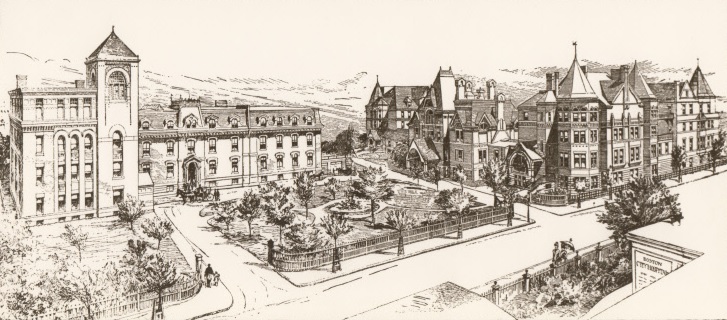 Nonetheless, the school had come a long way since its 1848 inception as the Boston Female Medical College. In 1873, the school – then the New England Female Medical College – merged with Boston University and became Boston University School of Medicine.
Nonetheless, the school had come a long way since its 1848 inception as the Boston Female Medical College. In 1873, the school – then the New England Female Medical College – merged with Boston University and became Boston University School of Medicine.
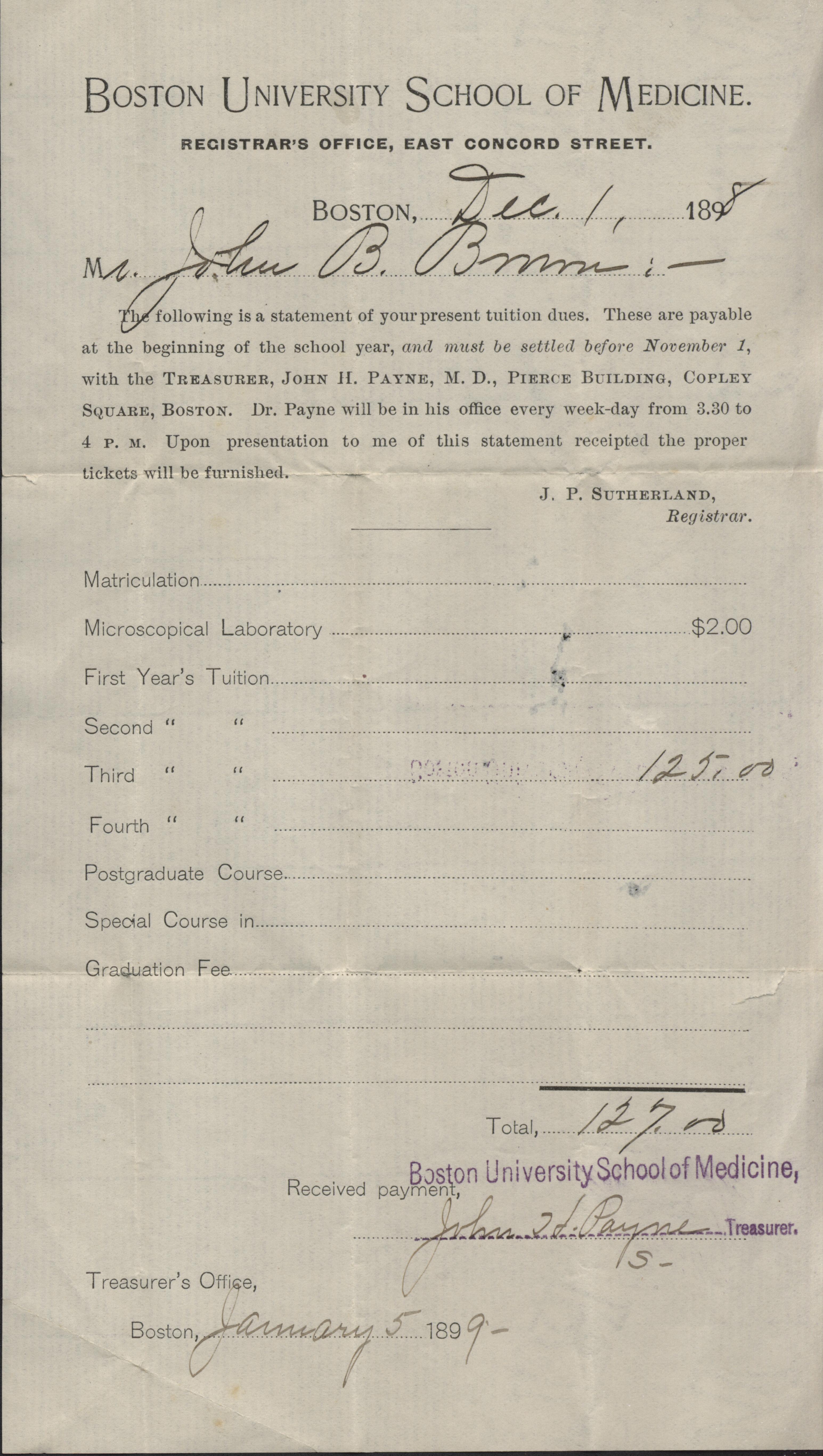 John Bean Brown was born around 1870 to Aaron Brown and Mary Fogg in Raymond, New Hampshire, a small town 50 miles north of Boston. Both of his parents had been born in Raymond, and his father served as a local blacksmith. John started BUSM in 1896 and graduated in May of 1900. As a 3rd year student, he paid $125.00 tuition and an additional $2 for “Microscopical Laboratory” fees. This $127.00 in 1898 adjusts to $3,283.45 in 2010.
John Bean Brown was born around 1870 to Aaron Brown and Mary Fogg in Raymond, New Hampshire, a small town 50 miles north of Boston. Both of his parents had been born in Raymond, and his father served as a local blacksmith. John started BUSM in 1896 and graduated in May of 1900. As a 3rd year student, he paid $125.00 tuition and an additional $2 for “Microscopical Laboratory” fees. This $127.00 in 1898 adjusts to $3,283.45 in 2010.
Several of John Bean Brown’s Report Cards and Other Documents from Four Years at BUSM:
First Year, 1896-1897
Second Year, 1897-1898
Third Year, 1898-1899
Fourth Year, 1899-1900
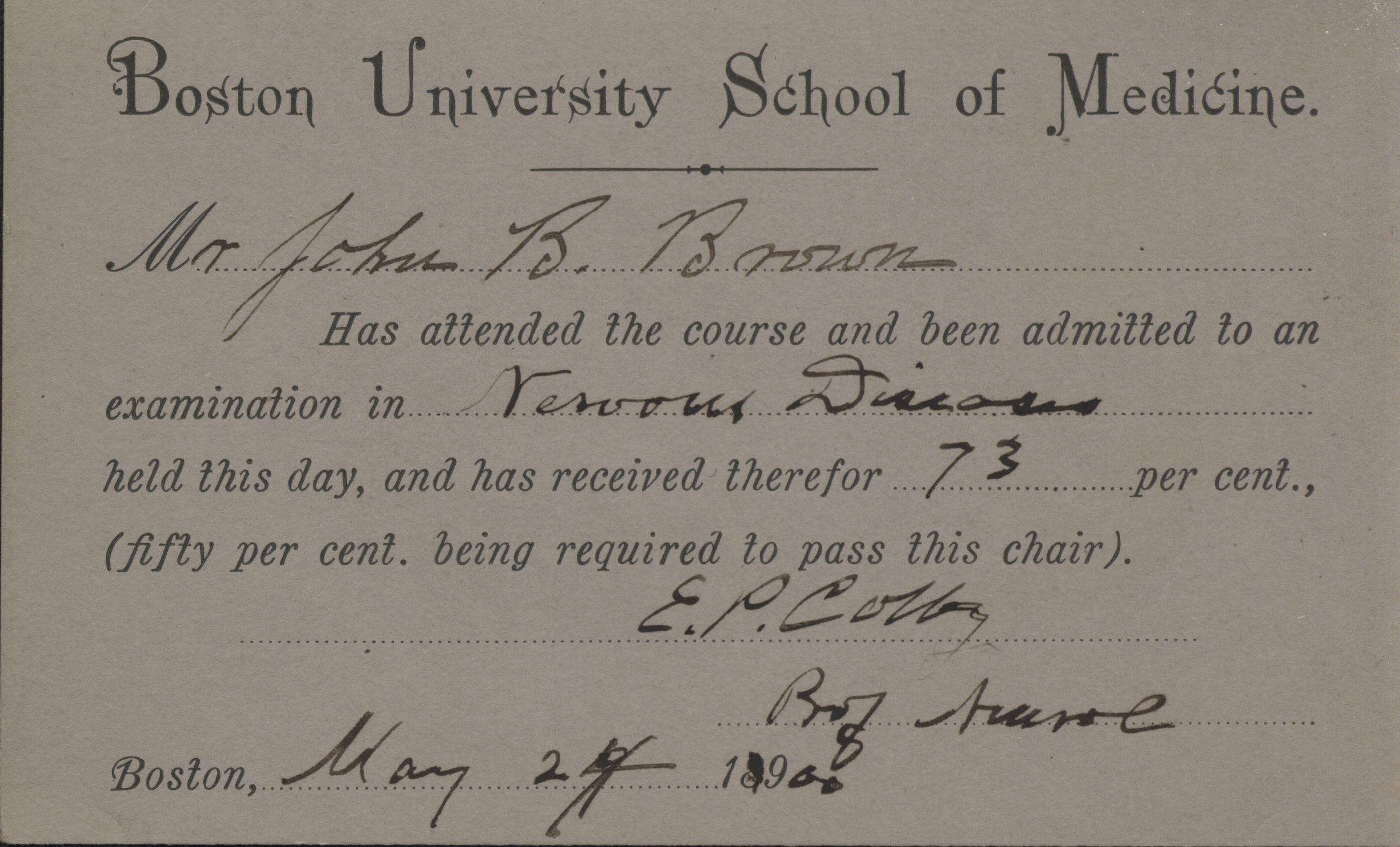 |
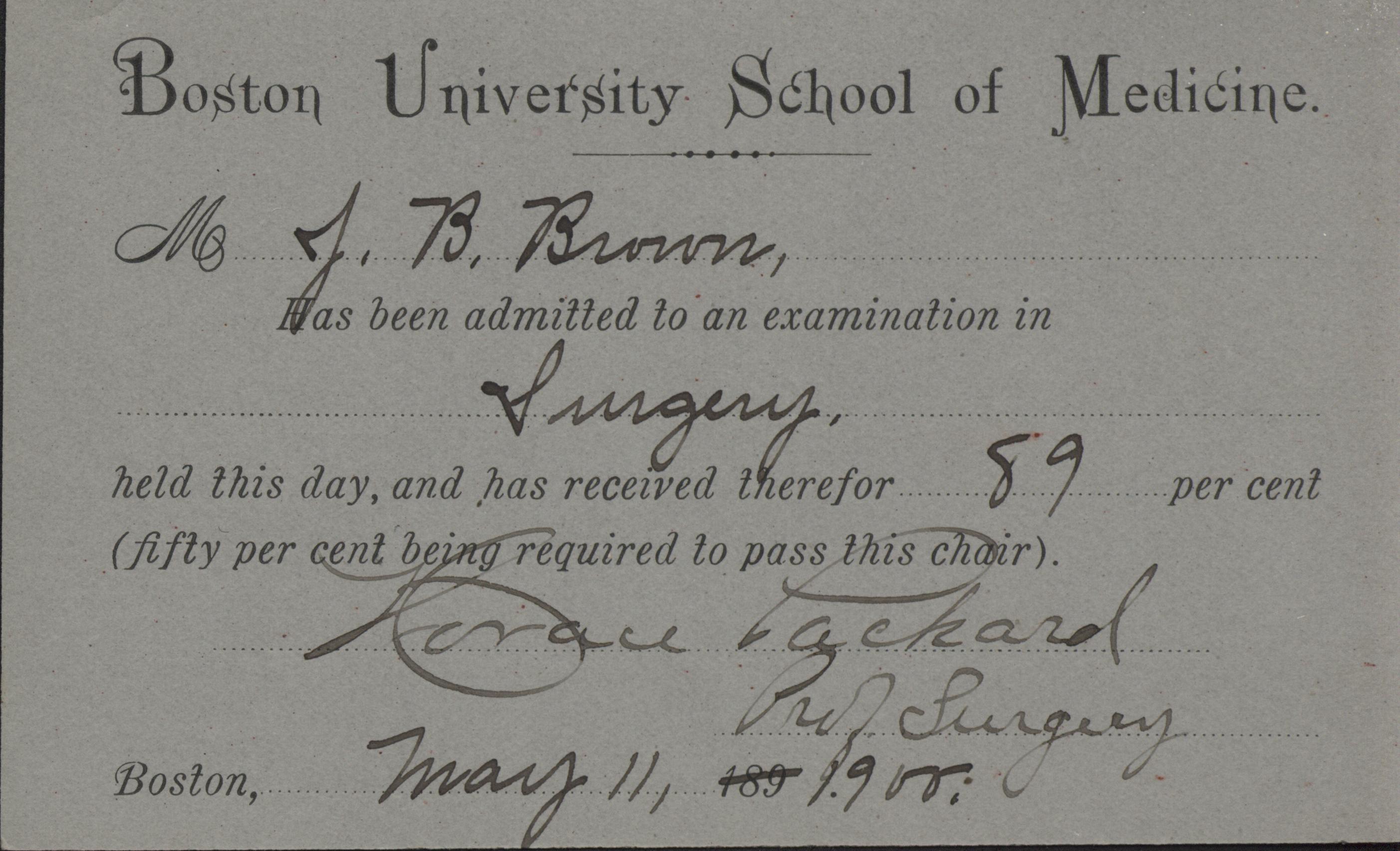 |
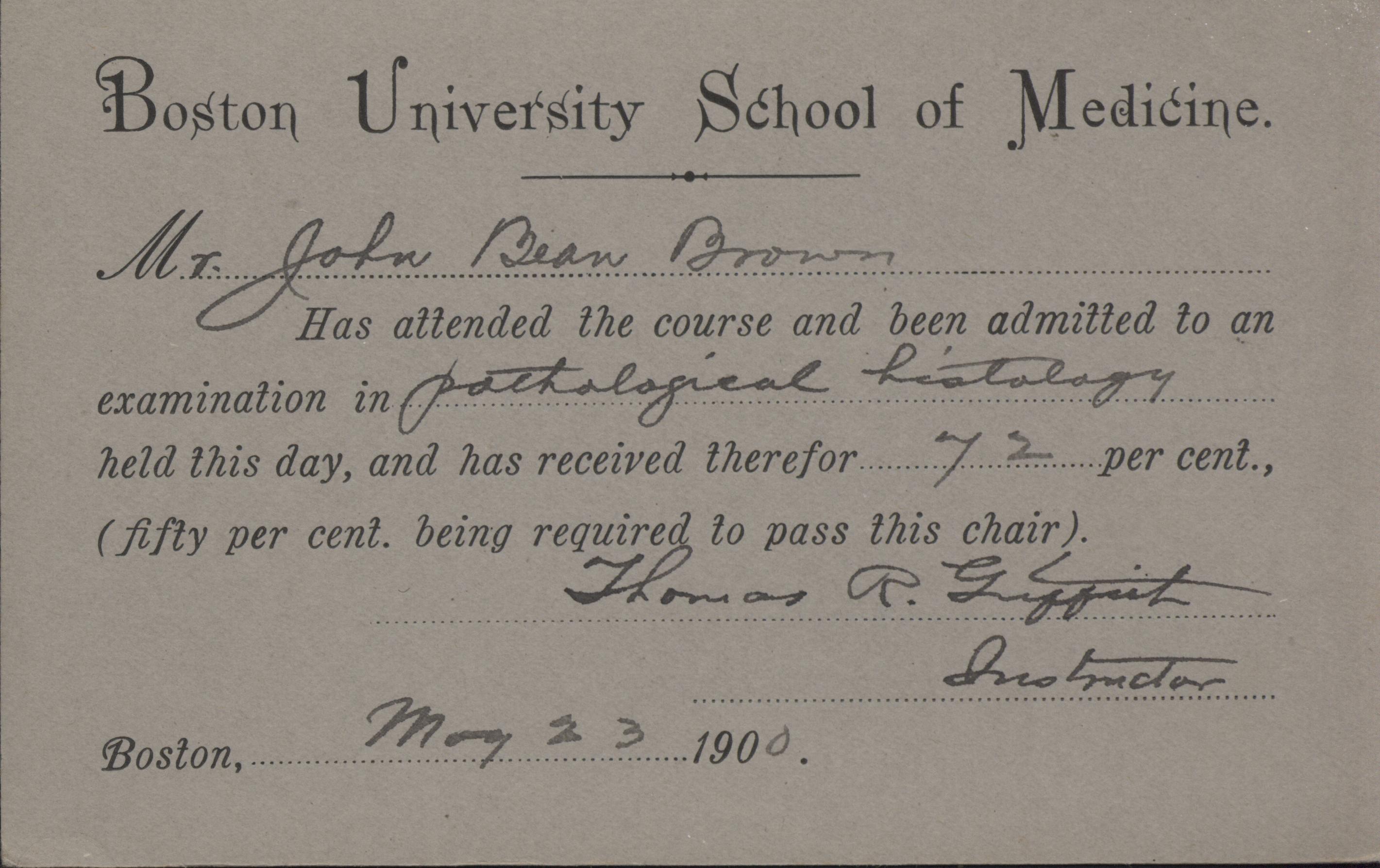 |
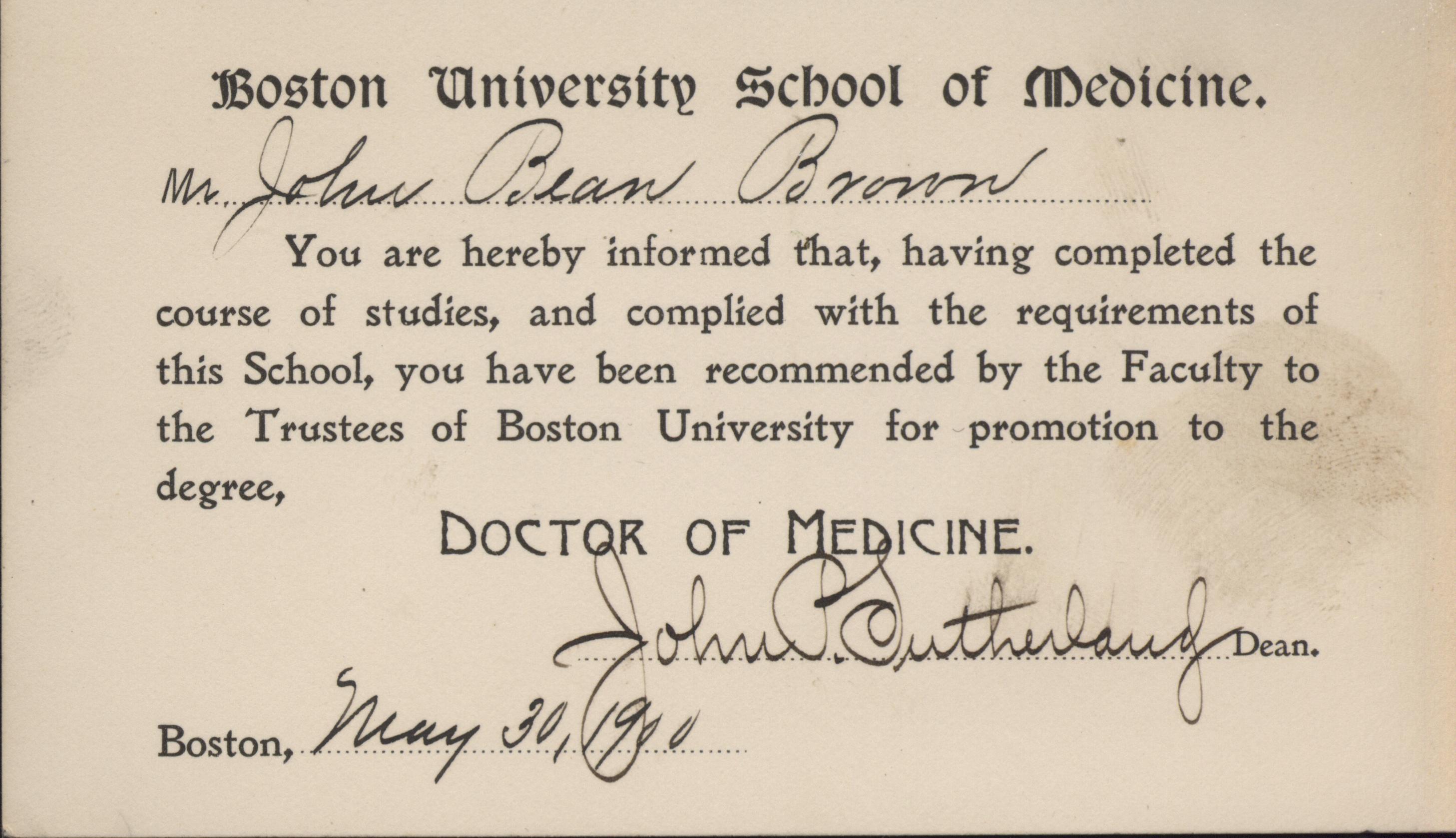 |
After graduation, John found employment at Fergus Falls State Hospital in western Minnesota. The hospital was a recently built Kirkbride Plan mental facility, whose superintendent was a graduate of BUSM. John likely served as an alienist, as psychiatrists were commonly called at the turn of the century. 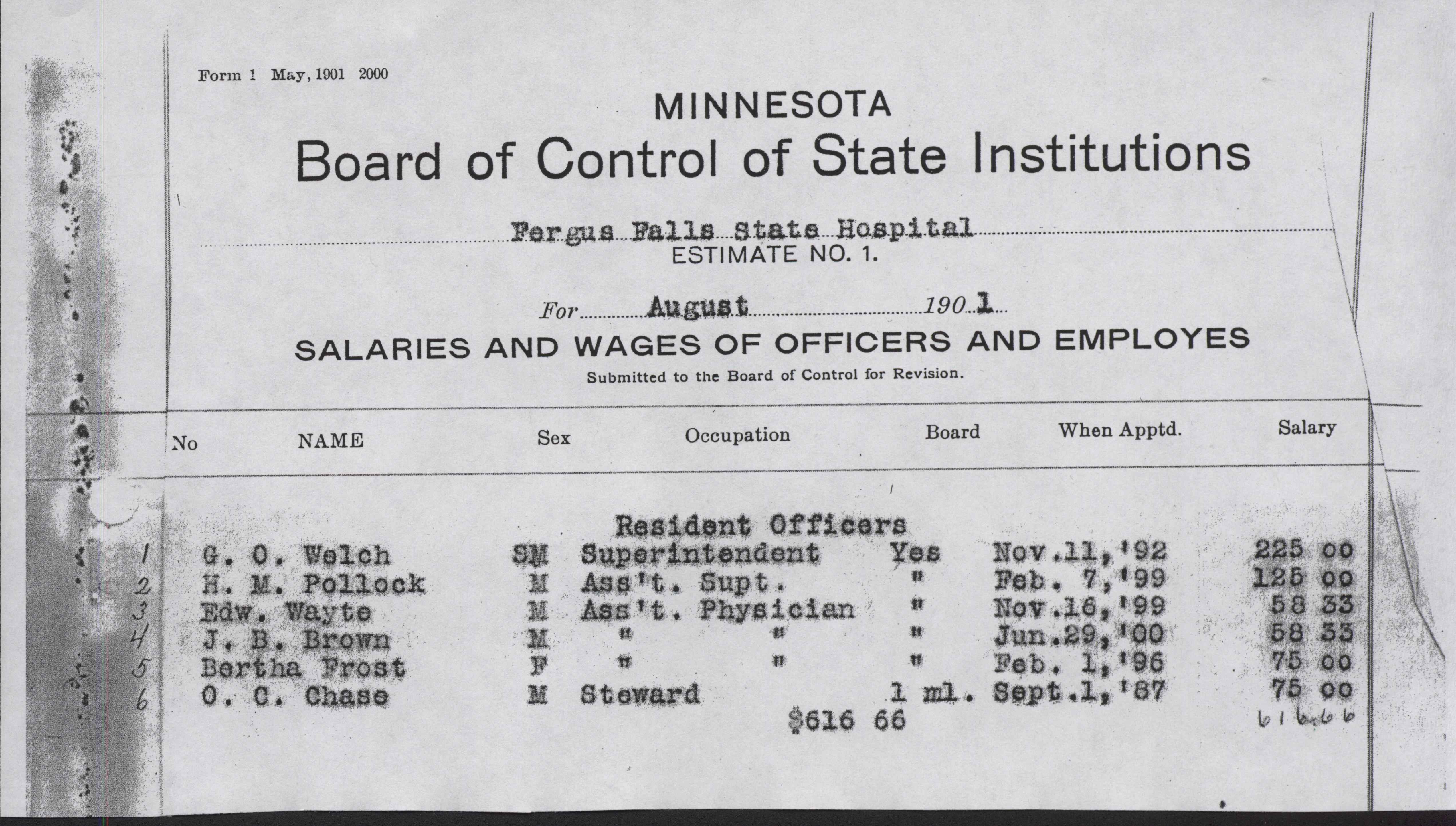 He was hired as an Assistant Physician on June 29, 1900, and earned $58.33 in August of 1901, which adjusts to $1,508.06 per month in 2010. His salary dropped to $50 per month in October, a reduction that may partly explain why he resigned on November 25, 1901 and returned to New Hampshire.
He was hired as an Assistant Physician on June 29, 1900, and earned $58.33 in August of 1901, which adjusts to $1,508.06 per month in 2010. His salary dropped to $50 per month in October, a reduction that may partly explain why he resigned on November 25, 1901 and returned to New Hampshire.
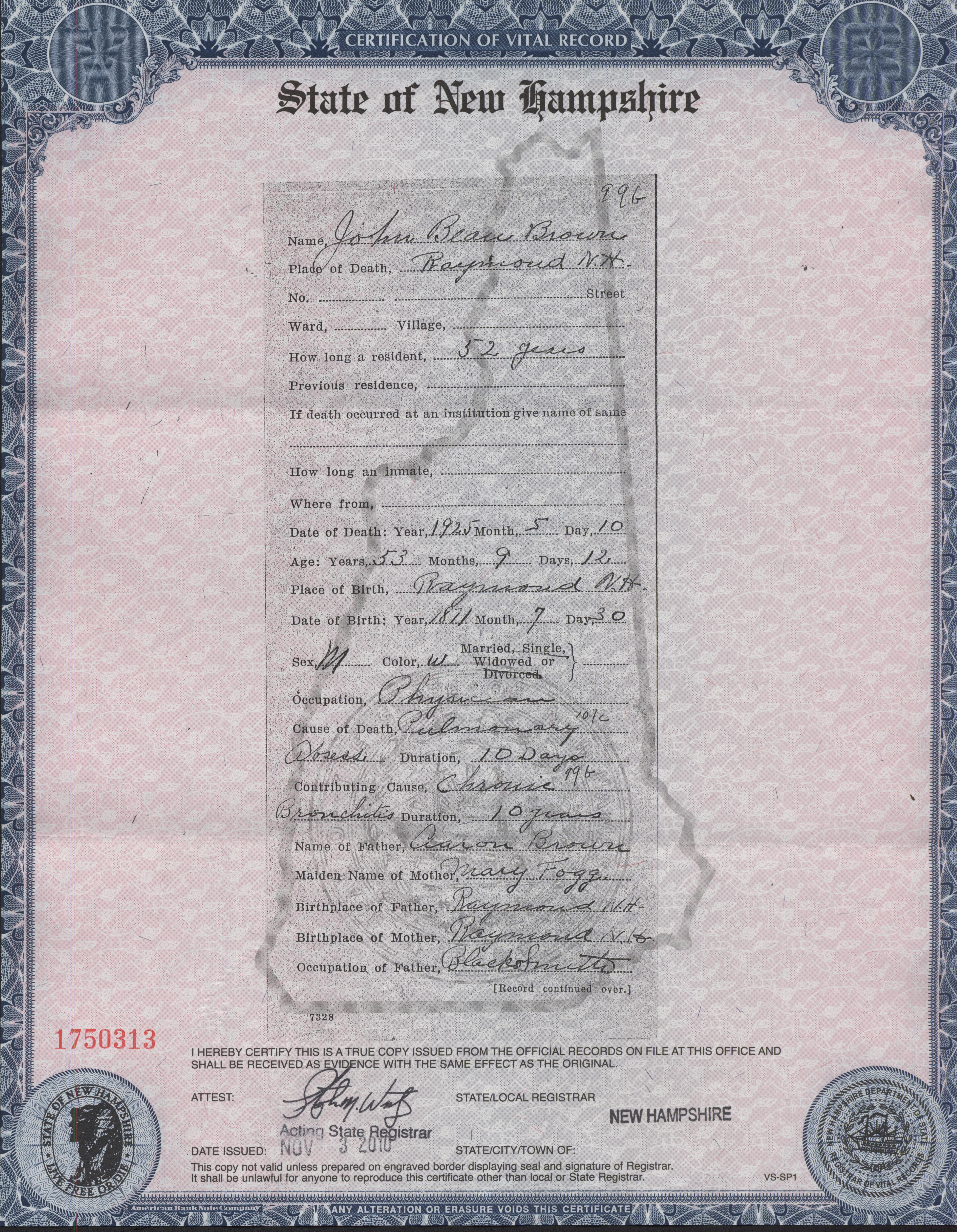 John Bean Brown died on May 10, 1925. He was 53. His death certificate lists a pulmonary abscess for 10 days as the cause of death.
John Bean Brown died on May 10, 1925. He was 53. His death certificate lists a pulmonary abscess for 10 days as the cause of death. 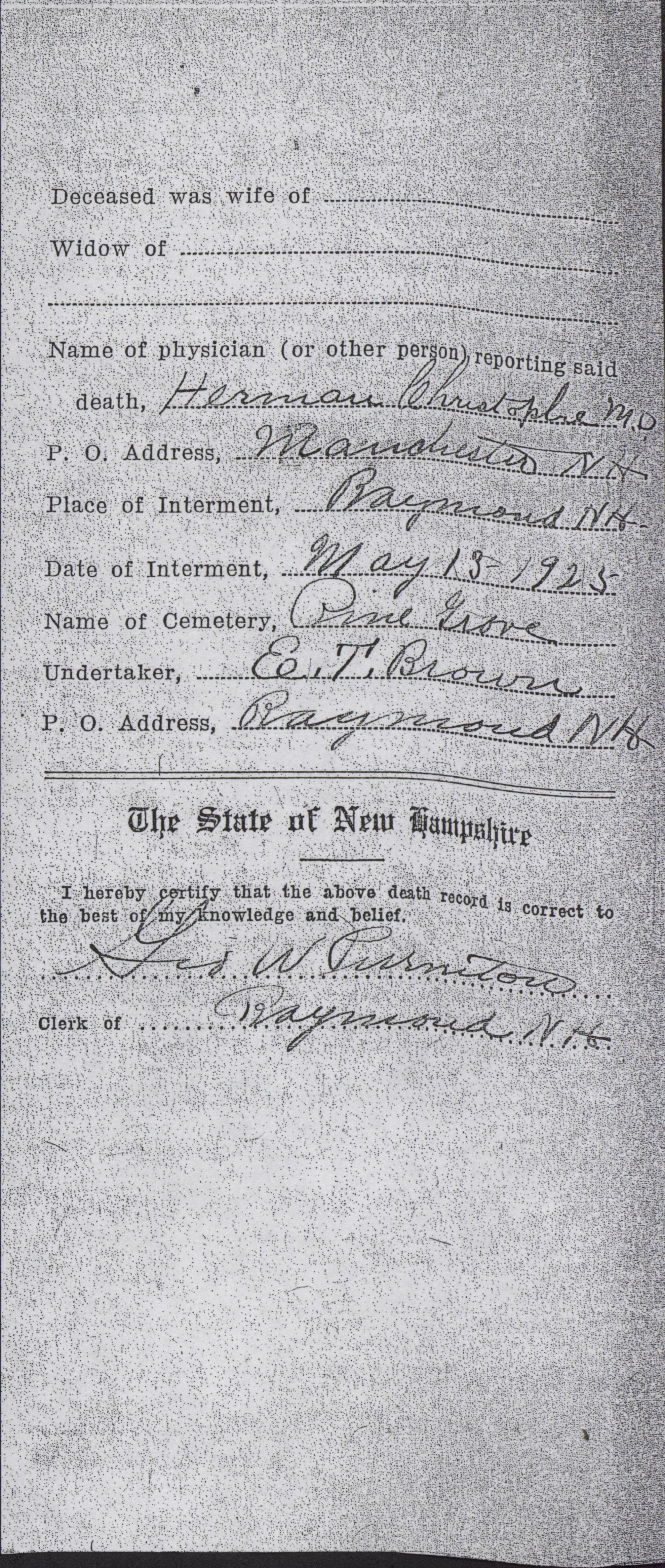 It notes that he also suffered from ten years of chronic bronchitis. His obituary mentions that he had been “an invalid for 18 years,” though it does not offer specifics.
It notes that he also suffered from ten years of chronic bronchitis. His obituary mentions that he had been “an invalid for 18 years,” though it does not offer specifics.
While John had outlived his wife, Mary Ingham Brown (1874-1921) by four years, he may not have been alone during his final days and moments. The physician certifying his death was a classmate at BUSM, and his funeral was attended by a number of colleagues. In addition, the Freemasons’ burial ritual was performed graveside and his stone is adorned with a Masonic Square and Compass. John Bean Brown remains buried next to his wife at Pine Grove Cemetery in Manchester, NH.
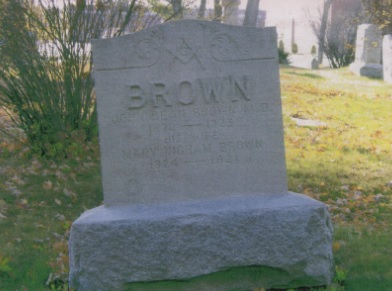 |
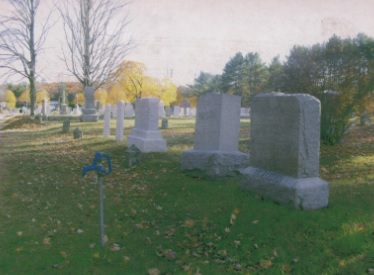 |
These artifacts were donated by Dr. James Brust, a 1968 BUSM graduate, to the Alumni Medical Library of BUSM. He thoroughly researched the life and death of John Bean Brown. The artifacts were originally assembled by the BUSM Historical Society and displayed in a case outside of the Medical Library.
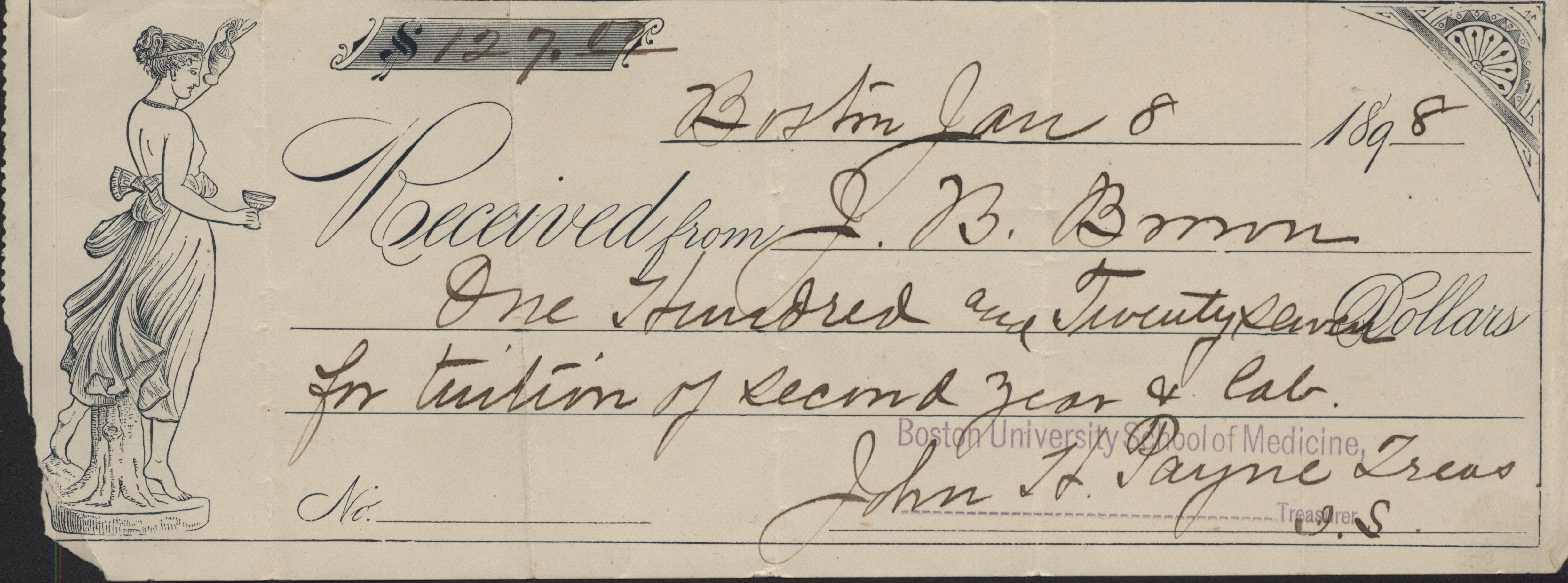
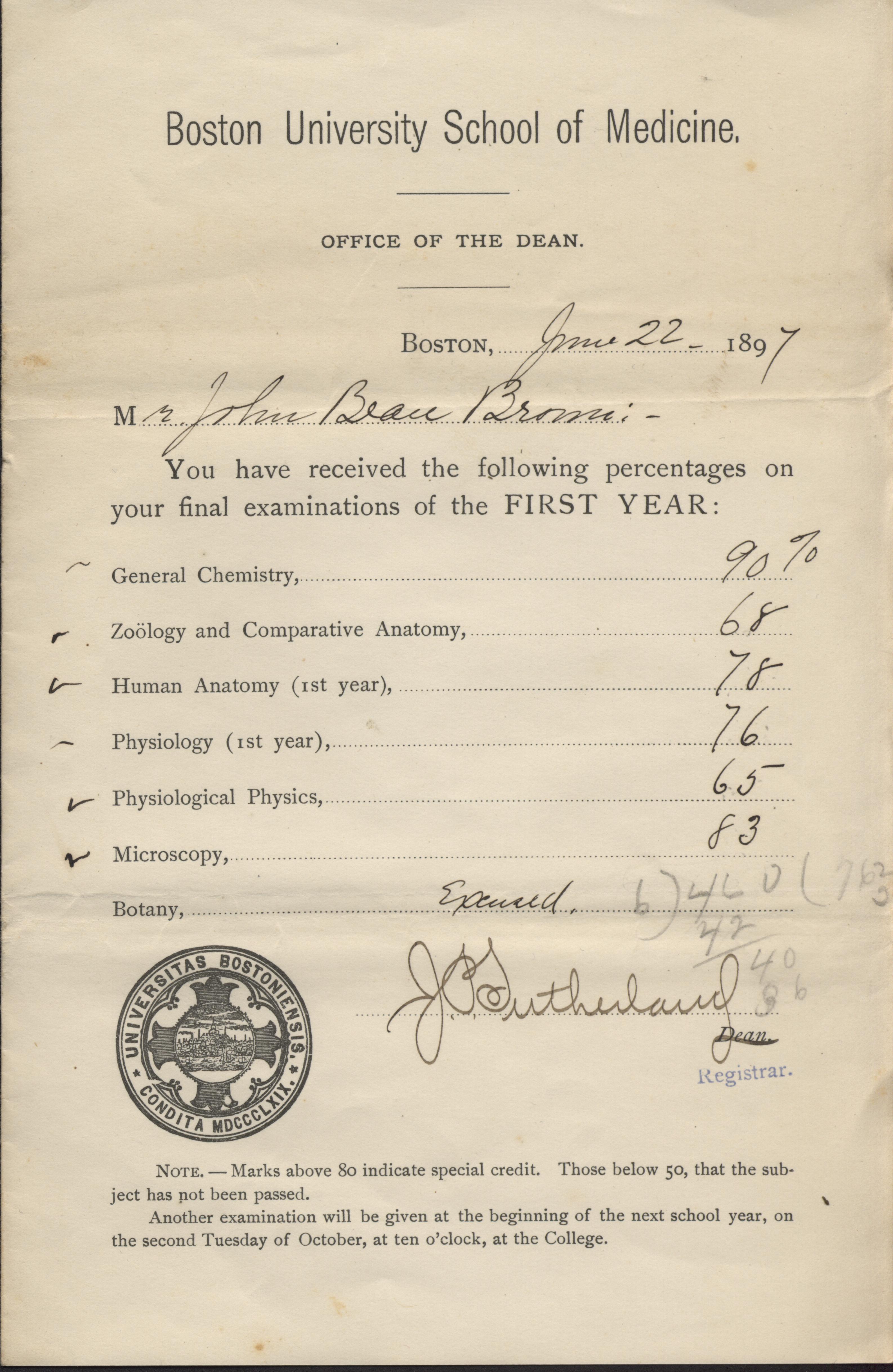
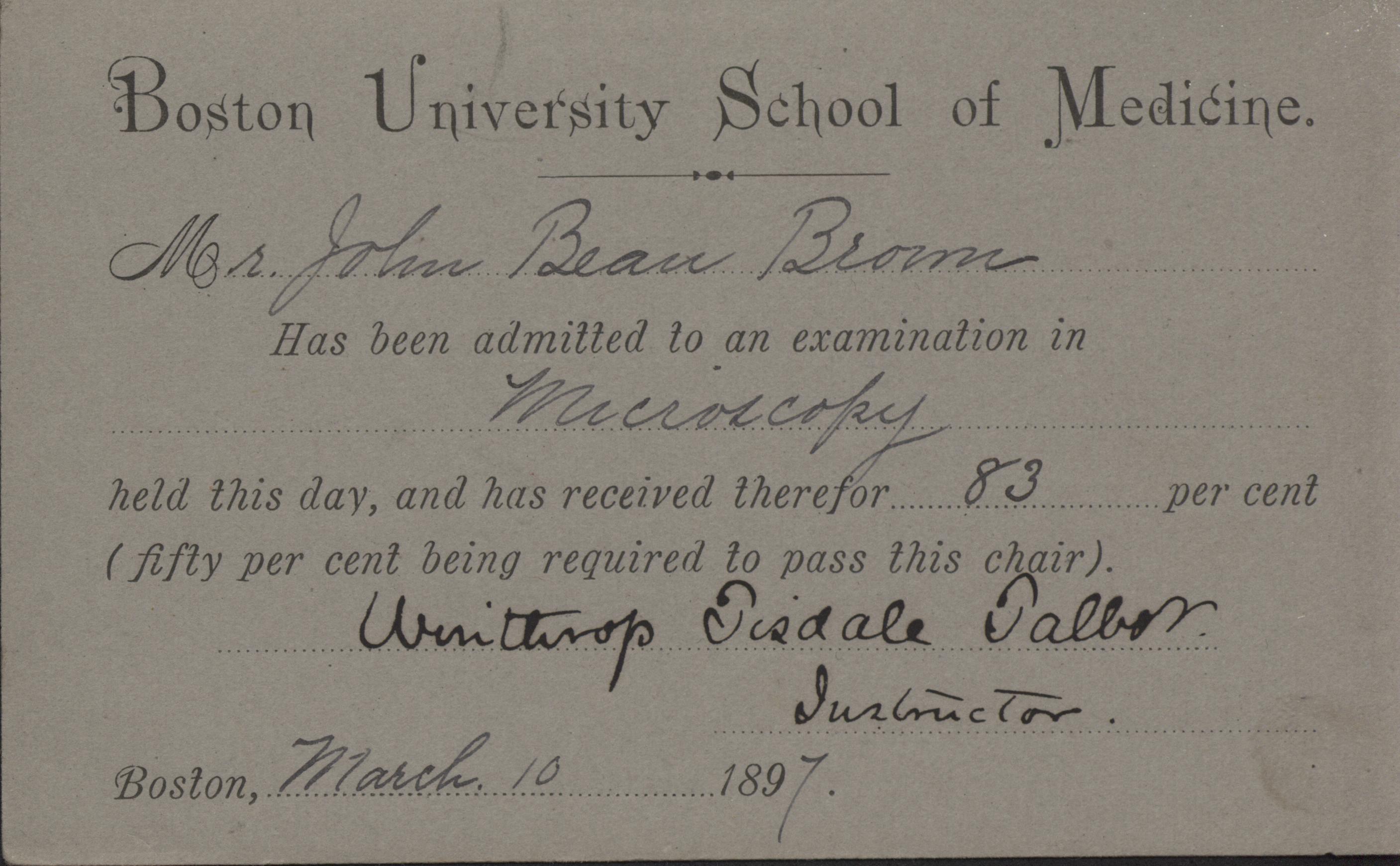
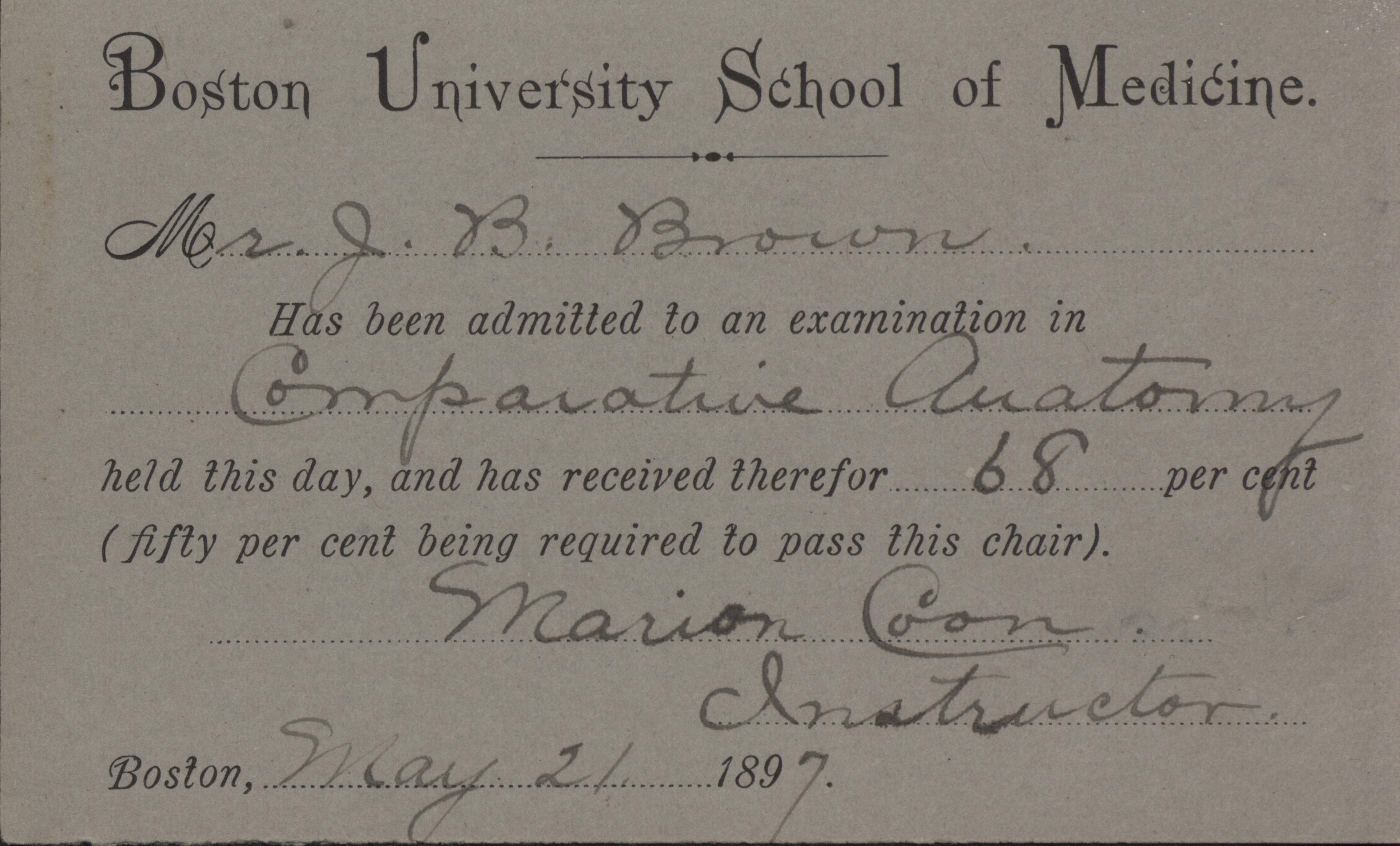
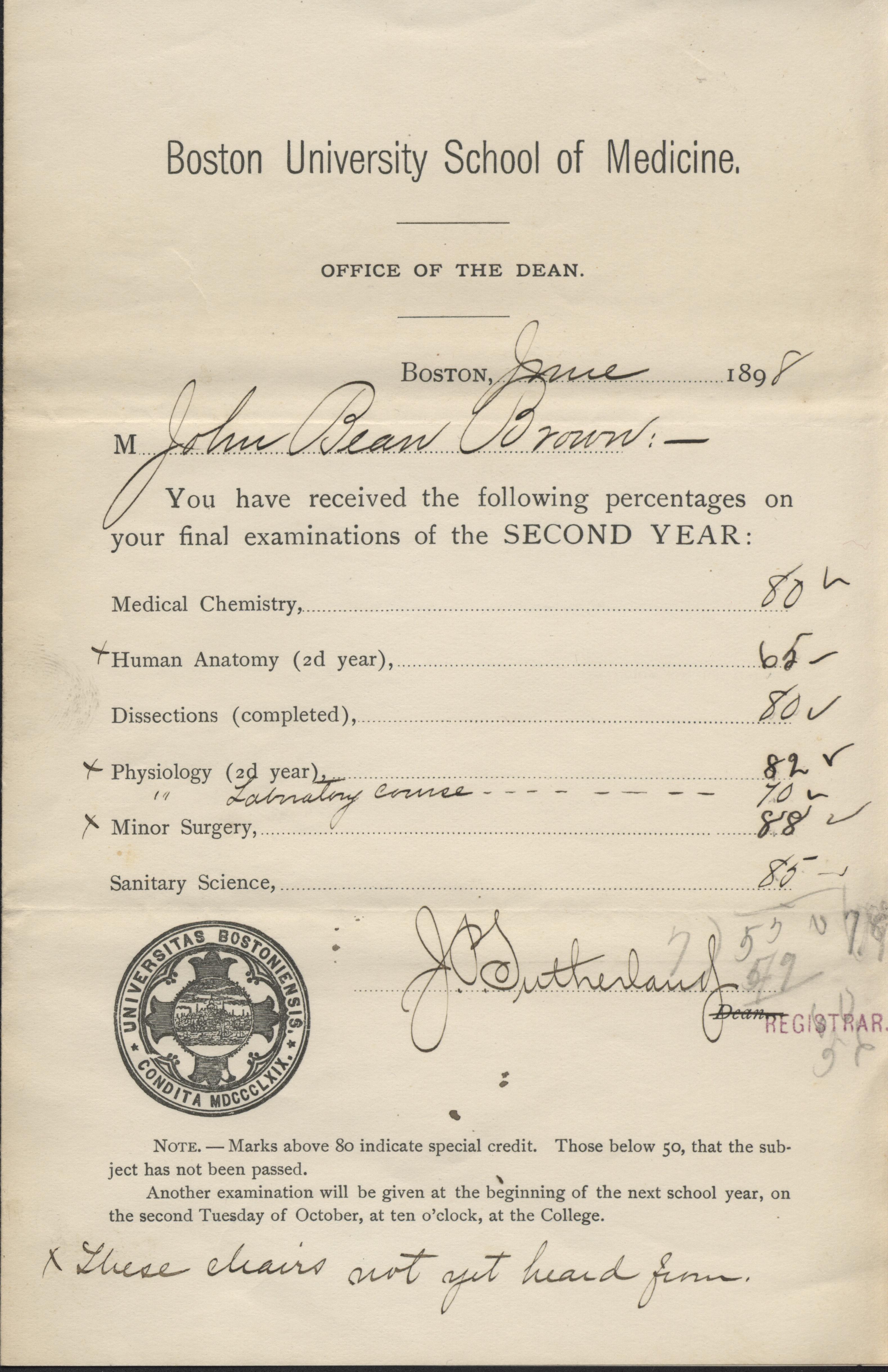
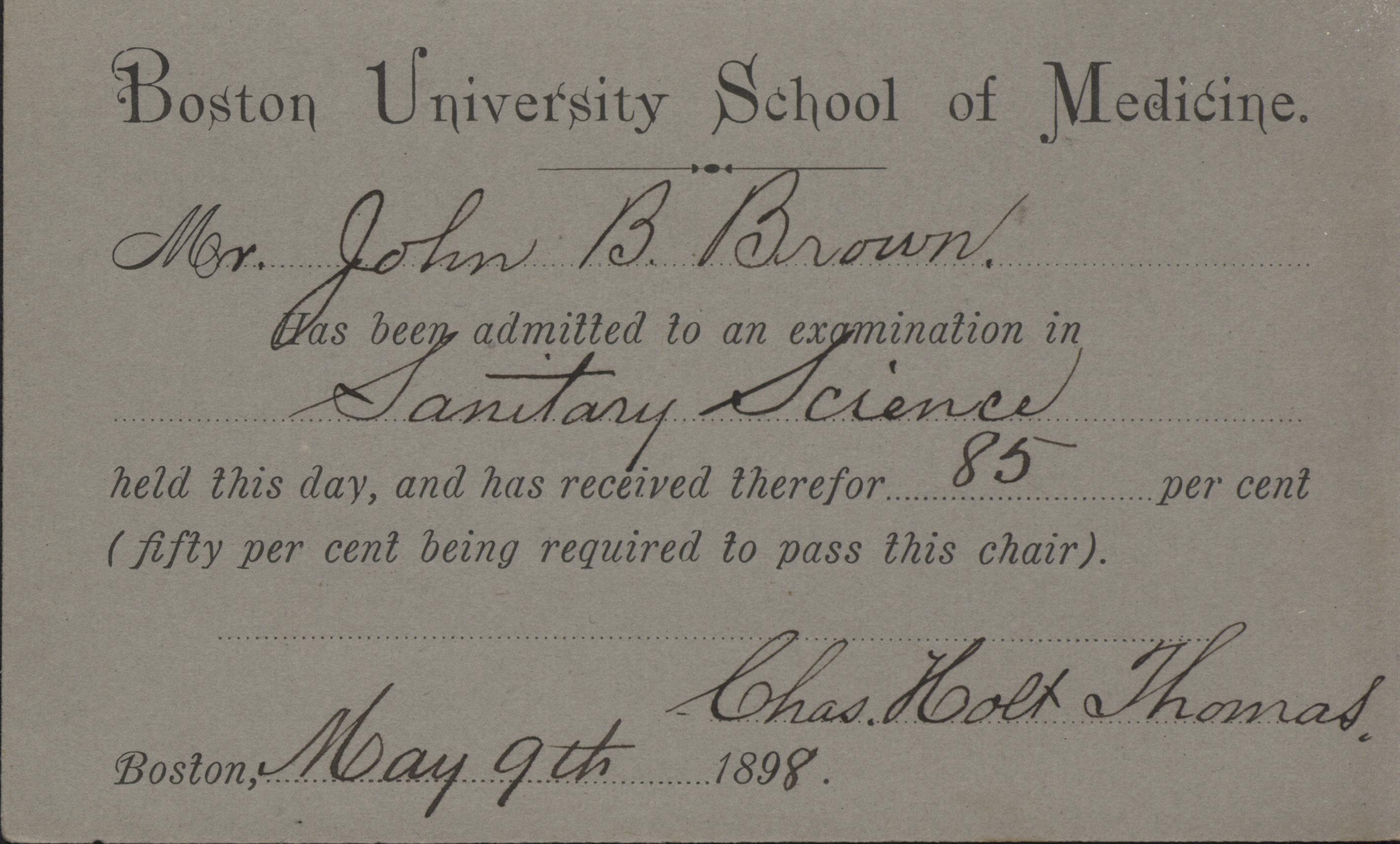
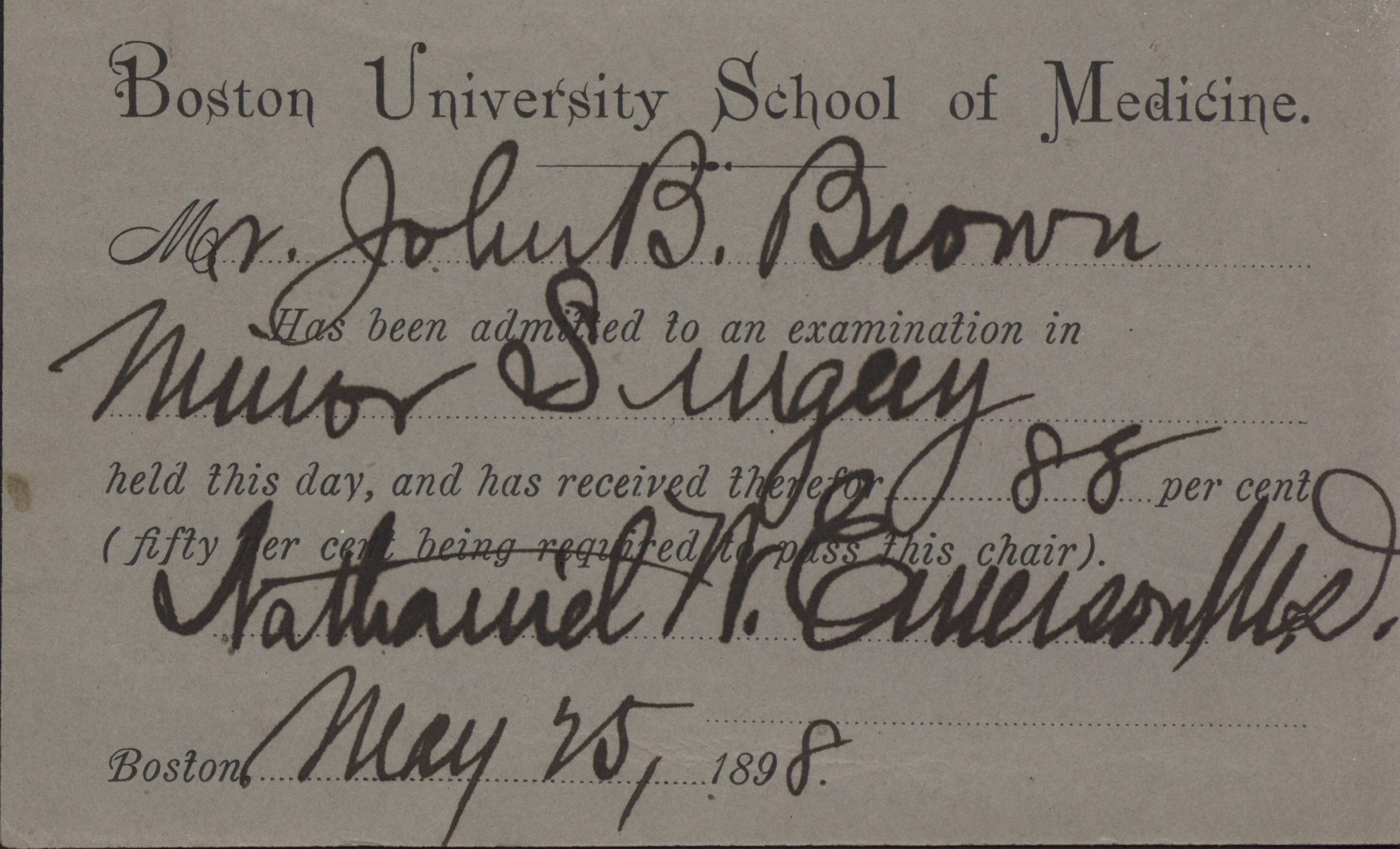
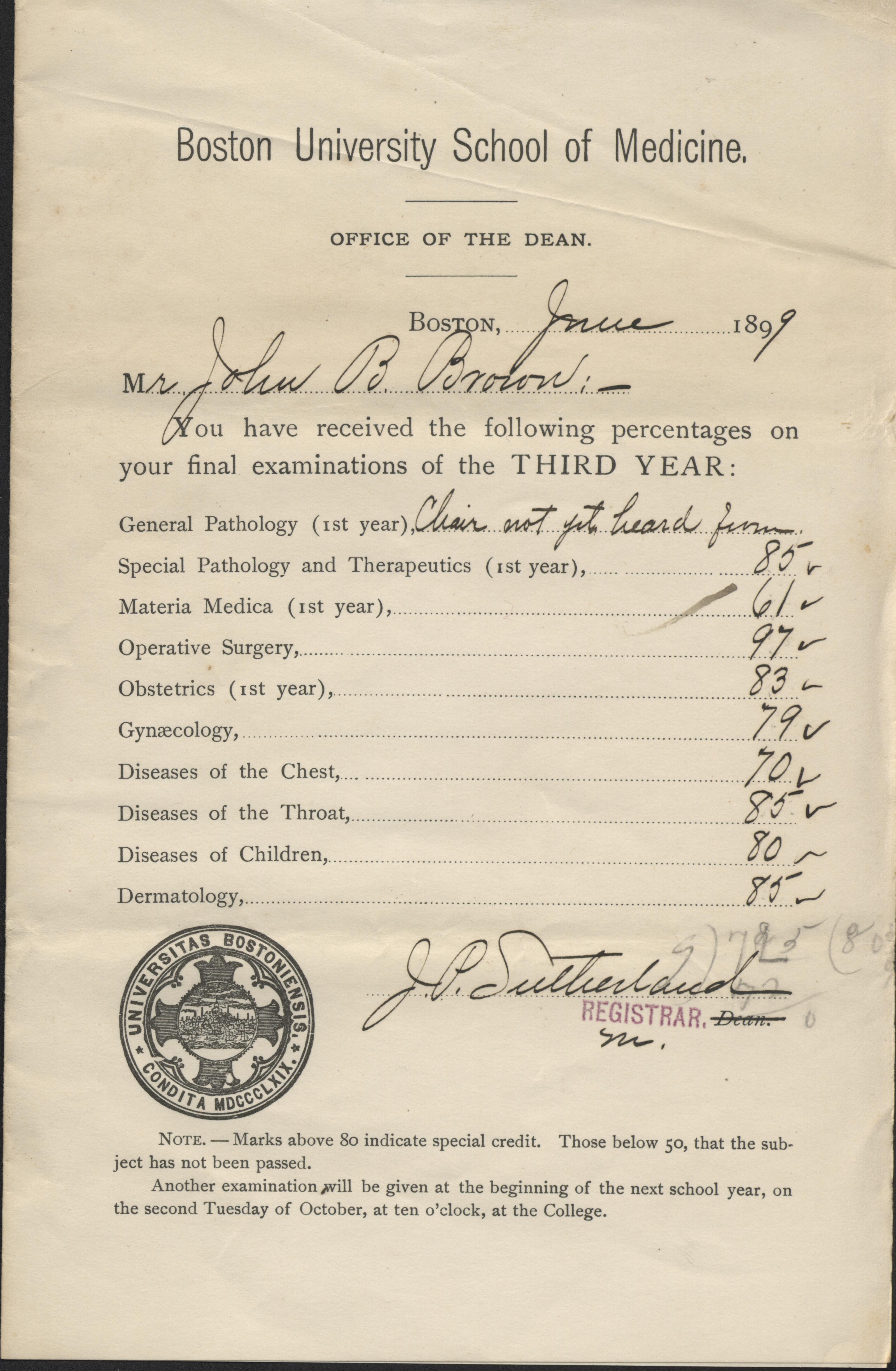
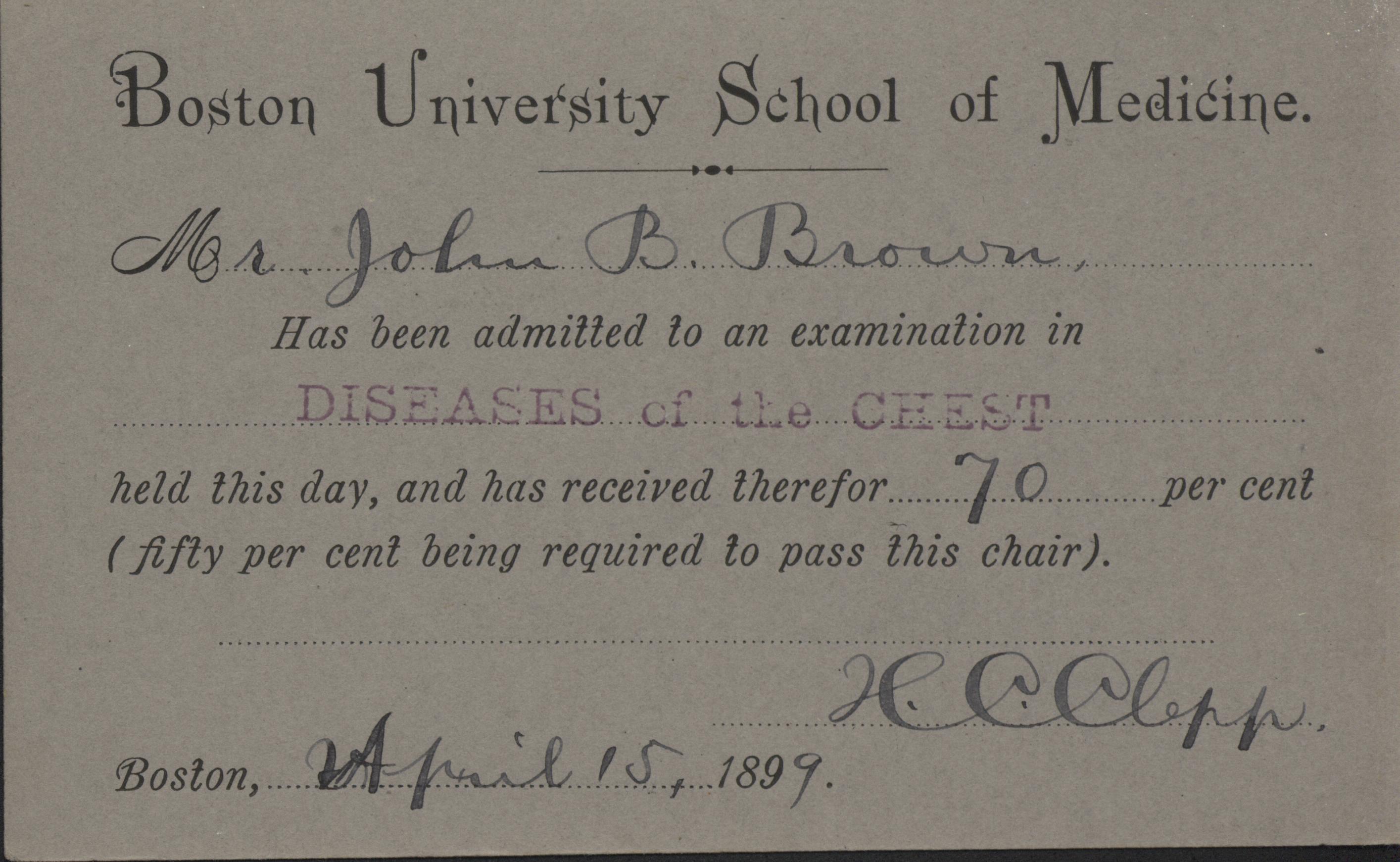
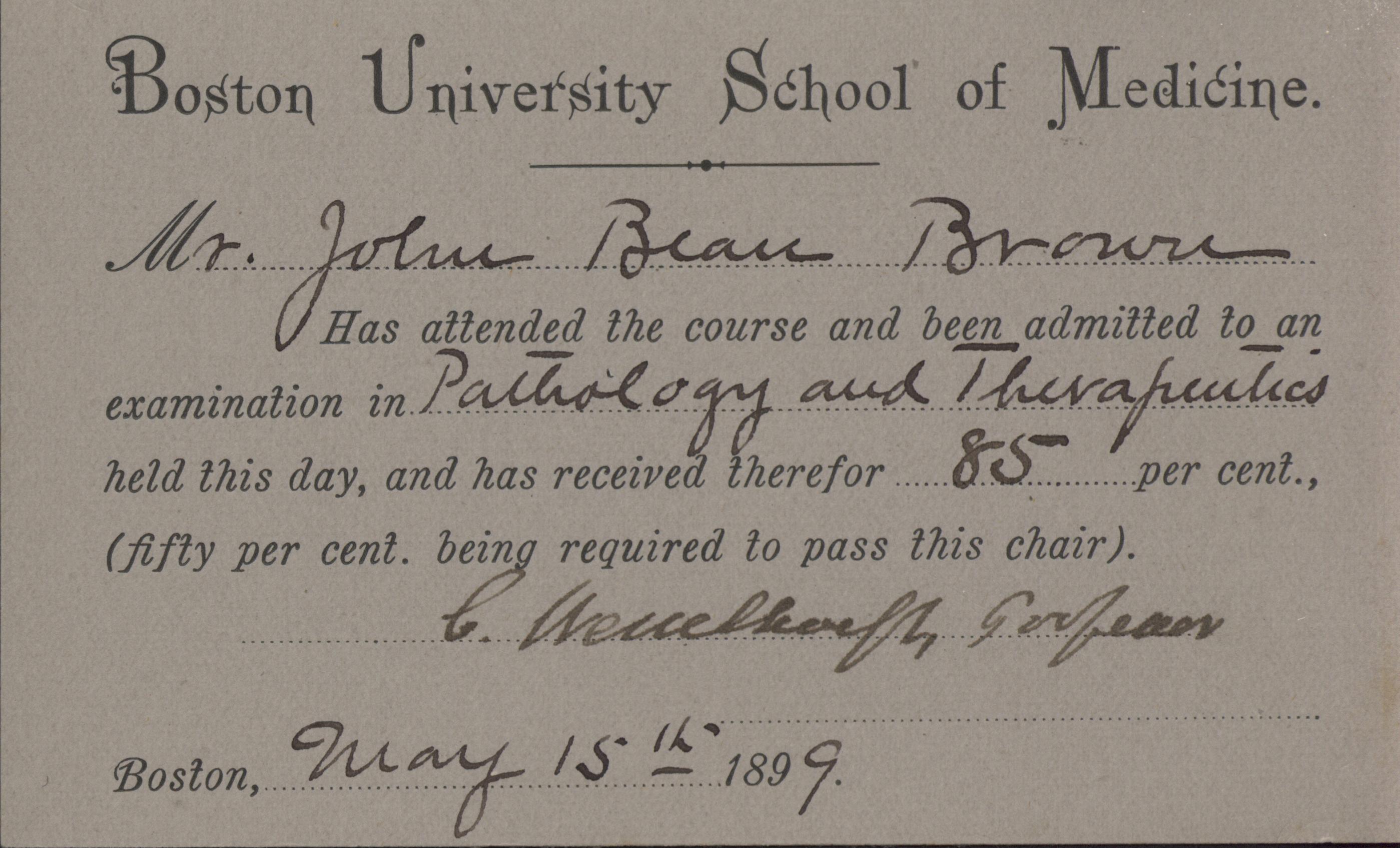
Great work! I thoroughly enjoyed reading yohr most recent blog posts.
They’re informative and offer great insight into
the subject wwhile beijg written in a way which is simple to understand.